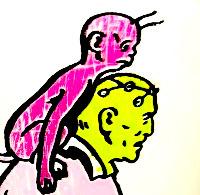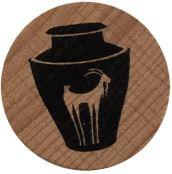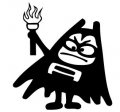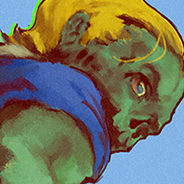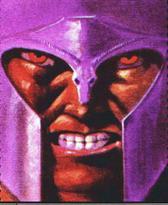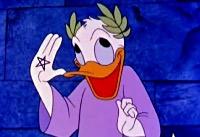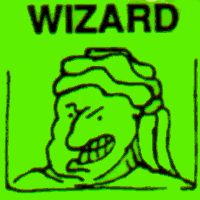The best and most important game of 2018.
I'm not going to waste my time writing or your time reading by describing what you do in Cole Wehrle's Root. I'm not going to enumerate what the phases are, how you score points, explain how crazy asymmetrical it is, fawn over how cute it is, or laboriously trot out all of the routine Consumer Reports product facts you can discover elsewhere by reading someone else’s coverage or by simply downloading and reading the rulebook. All of those things are important- the stunning highwire act of balancing wildly different player factions and standardized procedural elements for example. It's significant that Root is essentially a distillation and refinement of concepts developed in the far more complicated and far less accessible COIN designs. I think it is also worth mentioning that the game looks incredible with an instantly iconic illustration style, executed by Kyle Ferrin, which looks like a cross between Bill Watterson, Richard Scarry, and Animal Crossing. It absolutely matters that this game is extremely well-written, well-designed, and well-developed- on all of the above points Root would already be a game-of-the-year contender.
However, there are other reasons that I believe Root is in fact one of the best games I have ever played. I'm sure that statement will raise eyebrows and maybe even elicit some harumphs. Some may argue that it's a new game, but I would counter-propose that greatness doesn't always take 20 years to become evident. And I knew from my very first play that Root was something special not only because of how it created a fully realized game world, but also how it captured a completely fictive moment in this world's history and brought its themes to life. I mean themes, not setting. Setting is the pictures, words, and contextual framing. Themes are the meanings, subtextual concepts, and ideas beneath.
It is a period of tumult in the woodlands with three factions pursuing different agendas - and then there is a fourth actor or actress that exists as a kind of Yojimbo-like, spoiler figure between the rival powers. The Marquise de Cat has risen to power and seeks to develop industry, relying on a large martial presence to spread from a central power base. It isn't hard to imagine this faction as Saruman, sending his Uruk-Hai out from Isengard to subjugate, dominate, and exploit. Directly opposed to them are the Eyrie, an avian race representing the old, dynastic rulers of the woods that must struggle with a traditional internal political system as much as they will against rivals. But they gather in flocks, and shrewd bureaucratic positioning can find them reclaiming their territory. But there is also a rebellion stirring, as the diverse creatures of Woodland Alliance seek to rise up against both the interlopers and the de facto rulers. The problem with managing their influence is that sympathy can fall on their side, increasing their relative power. The Vagabond is the game's big question mark. Will he or she act as an agent of the Marquis or the Eyrie? Or will the role they play tilt the balance to the revolution? Or will the Vagabond emerge as the only real winner?
The degree of sophistication with which Root describes these four very different themes of conflict is quite far removed from what most players may be used to in encountering the usual "dudes on a map" or area control games. By vesting each of these factions with completely different processes and mechanics - all of which interlock in a way that recalls nothing less than EON's classic Dune- the game is able to depict this fictional turning point from different ideological angles. There are some ways this game is like a 4x design- but not every faction does every X, some factions do X differently, and some factions do X for different end results- and in a way more compelling and narratively richer than the basic "different victory condition" or "unique faction ability" tropes.
It is true that there is something of a rigidity to this format as each side requires that you mind their very specific objectives and play by their very specific rules. But I would argue that there are enough variable elements in place (card play, dice rolls, player behavior) to keep it volatile. The drama is high, regardless of which story arc the faction you are playing follows. And as you engage with the narrative, the senses of triumph, failure, and opportunity are revealed to be part and parcel with each faction's identity, philosophy, and agenda. There is more to this game than the gee-whiz, every side is different reaction suggests. The mechanical and gameplay differences here are founded in the themes that each faction represents, themes that describe different aspects of participation in political, military, and ideological conflict.
This is what makes Root such a great game, and it is what I predict the horde of games that are going to be chasing what this design does so right over the next five years are going to get so wrong. The asymmetry isn't there to artificially create an illusion of replayability, as is often the case in games with "unique" player factions. It's there to circumscribe the story of Root and to bring out what "might and right in the Woodland Realm" means, as the subtitle evocatively suggests. Here's a hint- "might and right" are different depending on which side of the conflict you are on.
I love teaching this game, even though it is something a challenge because you have up to four players each playing, essentially, a unique set of rules overlaying a central design. There is a moment when a new Alliance player realizes how utterly explosive their uprising in the mid game can be after a long, slow build up. I love how a Vagabond player suddenly understands that a single, treacherous crossbow assassination can tip the scales in a clearing. There's always a feeling of defeat when an inexperienced Eyrie player blows their mandated Decree and has to essentially sack their entire leadership- but theirs is a government that cannot exist without the churn so you explain how they'll still earn points for their roosts and rebuild for the next turn.
This sometimes charming, sometimes brutal world comes to life in the players' eyes, and it's magical. As these players become veterans, this wonderful sense of discovery is surmounted by a gradual understanding of this game's intricate pathways, trajectories and flow. It becomes internalized and each game this moment- this made-up history of this made-up time- breathes again.
All of the things that make Root truly great are directly tied to narrative, theme, and representation in a way that very few games attempt. It may be that Mr. Wehrle is among the few designers working today that are able to use the games medium to strike at these depths. Root is a masterpiece for all of the reasons you've read elsewhere for sure. But I would add that there are reasons below the surface - at its root if you absolutely must - that make it not only the standout game of 2018 but quite possibly of this generation.
An advance review copy of this game was provided courtesy of Leder Games. There Will Be Games accepts no payment from publishers or designers for reviews, editorials, or other content.
 Games
Games How to resolve AdBlock issue?
How to resolve AdBlock issue? 



















